Comments / Questions (6)
![]() SusanT wrote:
SusanT wrote:
On a small size... when short row starts, it doesn't seem the number of short rows is correct. it says work 13 times. However, if I start with 126 stitches, - 58 that i slip on the stitch holder + another 5 on the stitch holder, and the starting the repeat... then I only need to work 12 more times so I will have 3 stitches left before slipping all sts back on the needle, k2 rows...etc. Can you confirm it is only 12 times instead of 13 times for small size for the short row section? Thanks.
16.07.2016 - 05:52DROPS Design answered:
Dear SusanT, You first slip on a st holder the first 58 sts, then every 2 row the first 5 sts a total of 13 times (13x5=65 sts are on the st holder + the first 58 sts = 123 sts on a st holder, 3 sts remain on needle. Happy knitting!
18.07.2016 - 08:55
![]() Linda wrote:
Linda wrote:
I am trying to understand why the pattern wants decreased stitches once the garter st fix 6 rows for the first few rows of the pattern? i.e. decrease 24 sts in row 7. Thanks for your help.
21.03.2016 - 01:10DROPS Design answered:
Dear Linda, you have to dec evenly 24 sts on row 7 to get the correct width and correct number of sts for pattern worked afterwards. Happy knitting!
21.03.2016 - 10:31
![]() Dupire wrote:
Dupire wrote:
Bjr est il possible de le tricoter avec des aiguilles normales et pas circulaires ? si oui doit on conserver les memes dimensions ? si non existe t il un modele avec aiguilles droites ? merci pour votre aide cldt françoise
04.01.2013 - 17:39DROPS Design answered:
Bonjour Madame Dupire, ce gilet se tricote en allers retours, le choix de l'aiguille circulaire est fait pour avoir suffisamment de place pour y loger toutes les mailles, il est donc réalisable sur aiguilles droites mais les mailles seront beaucoup plus serrées sur les aiguilles. Bon tricot !
05.01.2013 - 12:29
![]() Elisabeth wrote:
Elisabeth wrote:
Sød vest/sjal :)
09.01.2011 - 17:10
![]() Clara Megre wrote:
Clara Megre wrote:
Gosto muito,é muito pratico
08.01.2011 - 13:47
![]() Agnes wrote:
Agnes wrote:
Är det en väst eller sjal?
14.12.2010 - 20:20
Fairy Feelings#fairyfeelingsvest |
|||||||||||||||||||
 |
 |
||||||||||||||||||
Knitted DROPS vest with lace pattern worked sideways in "Alpaca" and "Kid-Silk". Size: S - XXXL
DROPS 127-32 |
|||||||||||||||||||
|
PATTERN: See diagram M.1. The diagram shows the pattern from RS. GARTER ST (back and forth on needle): K all rows. --------------------------------------------------------- VEST: The garment is knitted back and forth on circular needle because of no of sts. Work the jacket from mid front on left front piece and out towards the side, bind off for sleeve and continue until mid back before casting/binding off. Then work right front piece the same way but reversed from mid front before the garment is sewn tog mid back. LEFT FRONT PIECE: LOOSELY cast on 126-131-137-142-148-153 sts on circular needle size 4 mm / US 6 with 1 thread Alpaca and 1 thread Kid-Silk. Work in 6 rows in GARTER ST - see explanation above - back and forth over all sts. On next row, K 1 row from RS while AT THE SAME TIME dec 24-29-23-25-31-30 sts evenly = 102-102-114-117-117-123 sts. Switch to circular needle size 4.5 mm / US 7. Work next row from WS as follows: 11-11-11-14-14-14 sts in Garter st, P until 4 sts remain, 4 sts in Garter st. Continue to work as follows (1st row = from RS): 4 sts in Garter st, M.1A, repeat M.1B until 11-11-11-14-14-14 sts remain which are worked in Garter st. REMEMBER THE GAUGE! When piece measures approx. 35-40-45-52-59-69 cm / 13¾"-15¾"-17¾"-20½"-23¼"-27⅛" - adjust so that next row is worked from RS - switch back to circular needle size 4 mm / US 6. K next row from RS while AT THE SAME TIME inc 24-29-23-25-31-30 sts evenly (do not inc over sts in garter st in each side) = 126-131-137-142-148-153 sts. K 1 row from WS and K 1 row from RS and K 1 row from WS over all sts. Now slip the outermost 74-76-78-83-84-86 sts in the left side of piece (seen from RS) on a stitch holder. Work 8-8-8-14-14-14 rows in garter st (= approx. 2-2-2-4-4-4 cm / ¾"-¾"-¾"-1½"-1½"-1½") over the remaining 52-55-59-59-64-67 sts on needle. Then slip these sts on a stitch holder. Cut the thread. Slip the 74-76-78-83-84-86 sts from the first stitch holder back on circular needle size 4 mm / US 6 and work armholes as follows from RS: Size S + M + L: bind off the first 34-36-38 sts at beg of row, work the remaining 40 sts on needle in garter st. Now insert a marker in the outermost st in the right side of needle (seen from RS - this marks mid on top of sleeve). Turn piece, work the 40 sts in garter st and then cast on 34-36-38 new sts at the end of row. Cut the thread. Size XL + XXL + XXXL: bind off the first 20-20-21 sts at beg of row, work the remaining 63-64-65 sts on needle in garter st, turn piece. Work the 63-64-65 sts in garter st, turn piece. Bind off the first 20-21-22 sts at beg of row, work the remaining 43 sts in garter st. Now insert a marker in the outermost st in the right side of needle (seen from RS - this marks mid on top of sleeve). Turn piece, work the 43 sts in garter st and cast on 20-21-22 new sts at the end of row, turn piece. Work the 63-64-65 sts on the needle in garter st, turn piece. Work the 63-64-65 sts on needle in garter st and cast on 20-20-21 new sts at the end of row. Cut the thread. ALL SIZES: Now slip the 52-55-59-59-64-67 sts from the stitch holder back on needle. Then K 1 row from RS and K 1 row from WS over all the 126-131-137-142-148-153 sts. On next row, K 1 row from RS while AT THE SAME TIME dec 24-29-23-25-31-30 sts evenly = 102-102-114-117-117-123 sts. Switch back to circular needle size 4.5 mm / US 7. On next row from WS continue as follows: 11-11-11-14-14-14 sts in Garter st, P until 4 sts remain, 4 sts in Garter st. Continue to work as follows (1st row = from RS): 4 sts in Garter st, M.1A, repeat M.1B until 11-11-11-14-14-14 sts remain which are worked in Garter st. When piece measures 51-57-63-72-80-91 cm / 20"-22½"-24¾"-28⅜"-31½"-35¾" (measured in left side of piece seen from RS, piece measures approx. 52-58-64-74-82-93 cm / 20½"-22¾"-25¼"-29⅛" in the right side), K 1 row from WS as before. K 1 row over all sts from RS while AT THE SAME TIME inc 24-29-23-25-31-30 sts evenly (do not inc over sts in garter st in each side) = 126-131-137-142-148-153 sts. Switch back to circular needle size 4 mm / US 6. Then continue in garter st over all sts while AT THE SAME TIME working with short rows to add extra width mid back as follows (start at beg of row from WS = from neckline): Work the first 58-61-65-70-76-79 sts on needle and then slip these sts on a stitch holder, work the remaining sts on the needle, turn piece and work back over all sts, * work the first 5-4-3-3-3-3 sts on the needle, then slip sts on the same stitch holder and work the remaining sts on the needle, turn piece and work back over all sts *, repeat from *-* a total of 13-16-19-19-21-24 times. Turn piece, work the remaining 3-6-15-15-9-2 sts. Now slip all sts back on needle (= 126-131-137-142-148-153 sts) and K 2 rows over all sts. Then loosely bind off the first 106-111-117-122-128-133 sts at beg of row from RS = mid back of vest. The piece now measures approx. 52-58-64-73-81-92 cm / 20½"-22¾"-25¼"-28¾"-32"-36¼" in the left side (seen from RS) and 62-70-78-88-98-111 cm / 24⅜"-27½"-30¾"-34⅝"-38½"-43¾" in the right side, measured in knitting direction! 20 sts remain on needle for collar. Continue in garter st back and forth over all sts, AT THE SAME TIME at beg of every row from RS bind off 2 sts. Continue like this until all sts have been bind off. RIGHT FRONT PIECE: Cast on and work as left front piece but reversed, i.e. all measurements that were done in the left side of piece (seen from RS) are now done in the right side of piece (seen from RS). When working the 8-8-8-14-14-14 rows under the sleeve adjust so that the first row is worked from WS (instead of RS) and the outermost 74-76-78-83-84-86 sts in the left side of piece (seen from WS, not RS) are slipped on a stitch holder. Continue to follow explanation for sleeve from WS (instead of RS). Finish by working short rows mid back by starting at beg of row from RS (instead of beg of row from WS). ASSEMBLY: Sew the vest tog mid back inside bind off edge. |
|||||||||||||||||||
Diagram explanations |
|||||||||||||||||||
|
|||||||||||||||||||
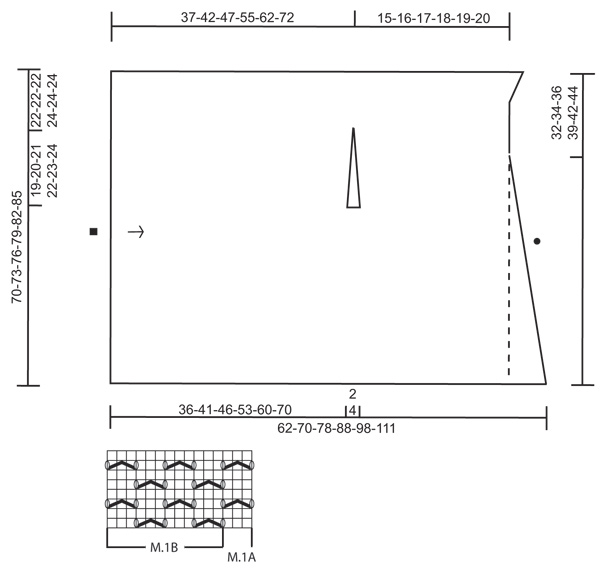 |
|||||||||||||||||||
Have you finished this pattern?Tag your pictures with #dropspattern #fairyfeelingsvest or submit them to the #dropsfan gallery. Do you need help with this pattern?You'll find 18 tutorial videos, a Comments/Questions area and more by visiting the pattern on garnstudio.com. © 1982-2025 DROPS Design A/S. We reserve all rights. This document, including all its sub-sections, has copyrights. Read more about what you can do with our patterns at the bottom of each pattern on our site. |
|||||||||||||||||||








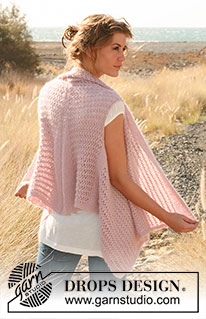















































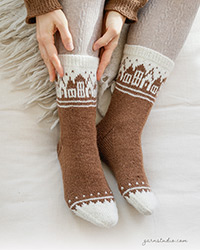

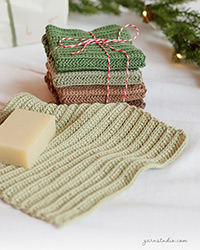


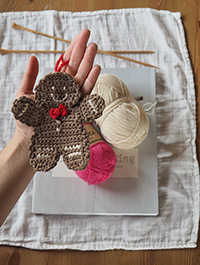
Post a comment to pattern DROPS 127-32
We would love to hear what you have to say about this pattern!
If you want to leave a question, please make sure you select the correct category in the form below, to speed up the answering process. Required fields are marked *.